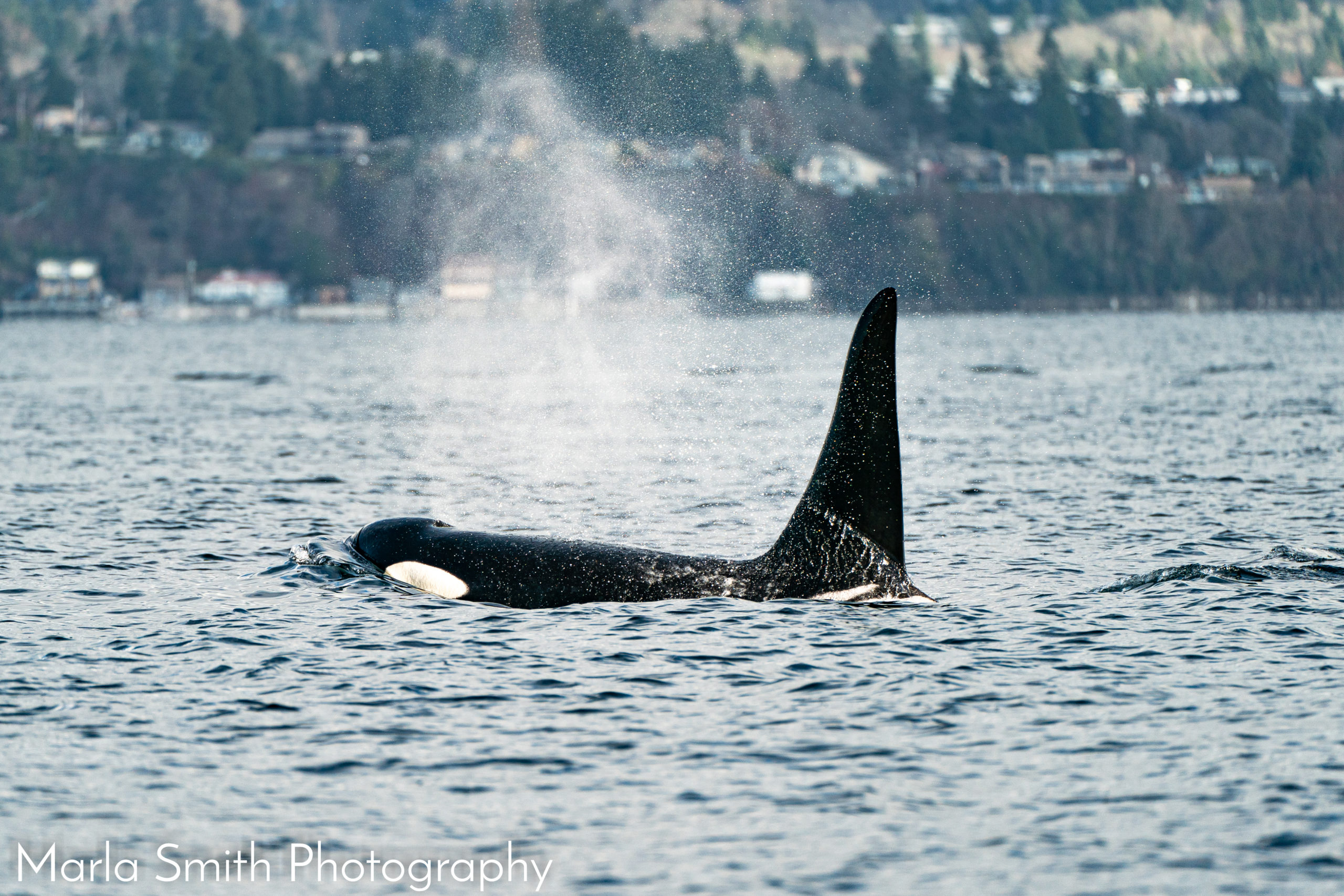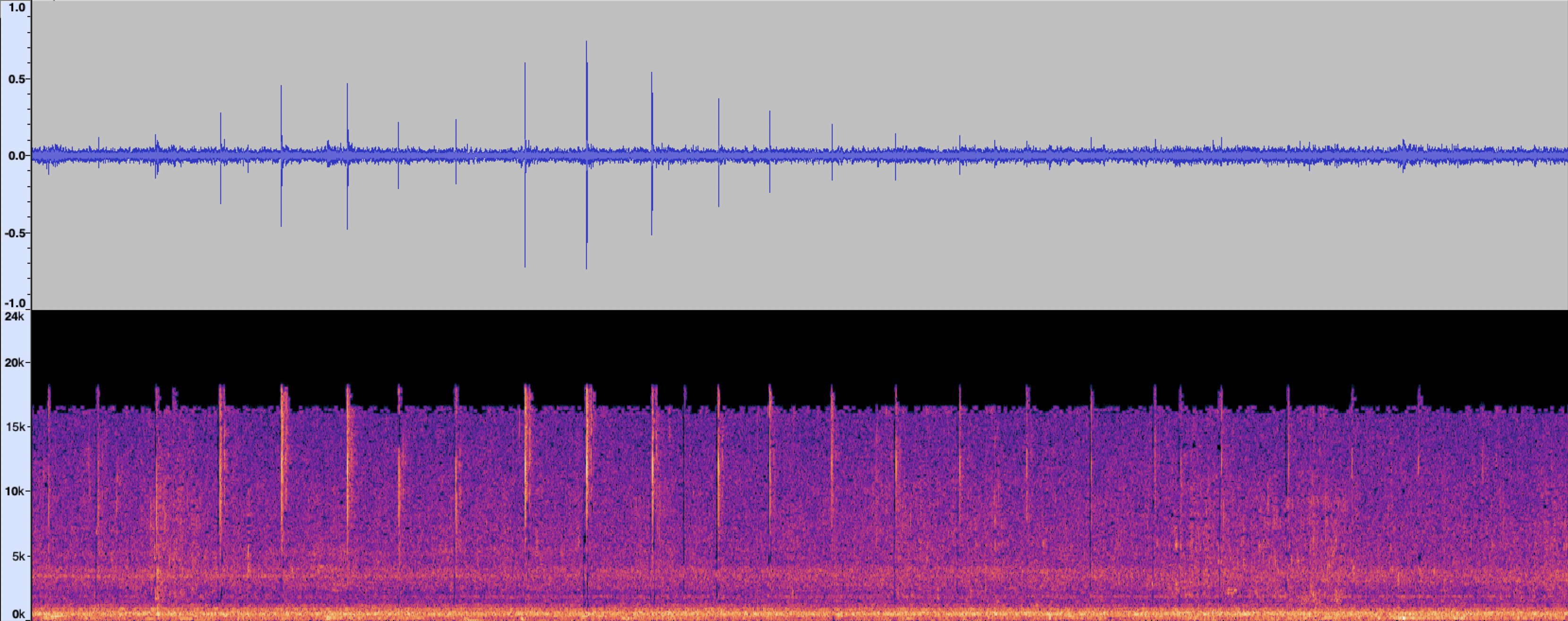
Version 1 Created by Max Bolen, 2024:
Orcas (Orcinus orca) are highly social, vocal animals that produce an array of vocalizations; calls, whistles, clicks, and percussives. Their various calls and whistles have been documented, categorized, cataloged, and researched over many years. However, not a lot of research has been put into their echolocation clicks which they use to forage and navigate around their ecosystem. Unlike calls and whistles, clicks do not have a distinct pitch or horizontal structure in a spectrogram, which makes possibly unique clicks hard to identify. Since research in this field is still relatively young, we do not know if individual clicks are unique by themselves, but what we can observe is distinct inter-click intervals (ICIs) in a sequence of clicks that differentiate the speed of clicks.
This project started to advance research into orca clicks and provide the Orcasound community with a publicly accessible catalog showcasing the variety of clicks produced by our local Southern Resident killer whales (SRKWs), captured through our live hydrophones. Recognizing that the scientific understanding of orca clicks is still developing, I propose these SRKW click sequence categories for educating listeners, and for beginning to establish a labeling standard for future annotations. In addition, I have prepared improved click recordings for the Orcasound learn page and created a more user-friendly catalog for listeners. Ultimately, I wanted to provide a foundation for those interested to begin their learning and inspire their own investigations into orca echolocation.
This catalog was developed with recordings from Bush Point and the Orcasound Lab during the 2020 to 2024 seasons. Max decided upon 5 ranges of clicks classified by their ICIs and 2 special cases heard in our local study areas to provide you with a simple guide to analyzing and appreciating SRKW clicks as you hear them. The ICI ranges are: very fast (<50ms), fast (50-100ms), medium (100-250ms), slow (250-400ms), and very slow (>400ms). The first special case is the buzz: such rapid clicks that they sound like one continuous buzz. The second special case is a sweep, in which the click amplitude increases and decreases – likely caused by an orca sweeping their head towards and away from the hydrophone while echolocating. This will allow you to confidently and consistently annotate the live audio stream when you hear clicks and help Orcasound learn more about the intricacies of orca echolocation in the Salish Sea!
Very fast clicks
<50ms ICI

Fast clicks
50-100ms ICI

Medium clicks
100-250ms ICI

Slow clicks
250-400ms ICI

Very slow clicks
>400ms ICI

Buzz

Sweep

What do the colors on these 7 samples represent? Do they have something to do with the depth of the Salish where the SRKWs are sounding or the speed they are swimming? Have you created a “symphony” using these sounds? In Colby’s book a flute was played for Haida. Have any other instruments ever been played? Has AI been used to interpret the ICIs and then communicate with an Orca?
Good grief, I have a lot of questions. This is Fascinating!!! I heard years ago that whales liked Willie Nelson songs when they were broadcast over the side of a boat. It would be interesting to see if whales could sing along like a dog I had. He sang in the key of F. My piano students would play for him and he would sing. Honest!
Hi Lynne! Great questions!
The colors in the spectrograms represent how intense the sound is at a certain time and frequency. Warming colors represent more intensity. You can learn more about spectrograms here — https://en.wikipedia.org/wiki/Spectrogram — and play with them musically/interactively here — https://musiclab.chromeexperiments.com/spectrogram/
We haven’t created music with these sounds, but others have, and you’re welcome to do some composing. Here you can find many of the signals and noises we’ve recorded over the years — https://orcasound.net/data/product
The orcas we hear most here near Seattle are often are endangered or species of concern, so aren’t the best candidates for playback studies or music-making. Such experiments might be easier and less impactful with other killer whale ecotypes.
AI has thus far only helped us listen for the calls of the endangered Southern Resident orcas. We are working on training others that could detect and analyze click patterns, though!